

Damion Smy
GWM Cannon Alpha ute, Tank 300 HEV and Tank 500 recalled
1 Day Ago
The Volkswagen T-Roc CityLife is a special model slotting under the existing Style. Will it sway you away from other affordable small SUVs.
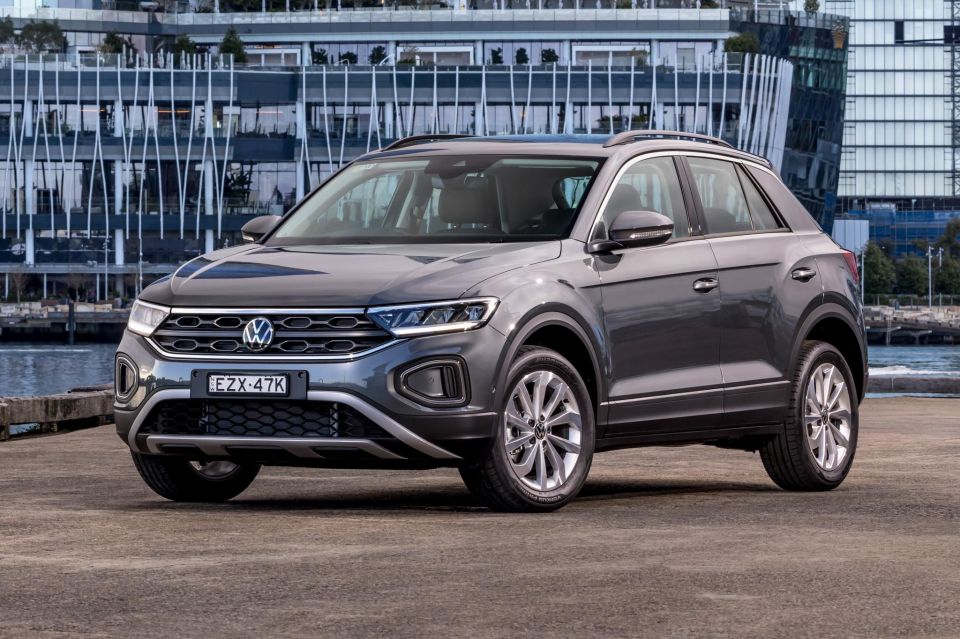
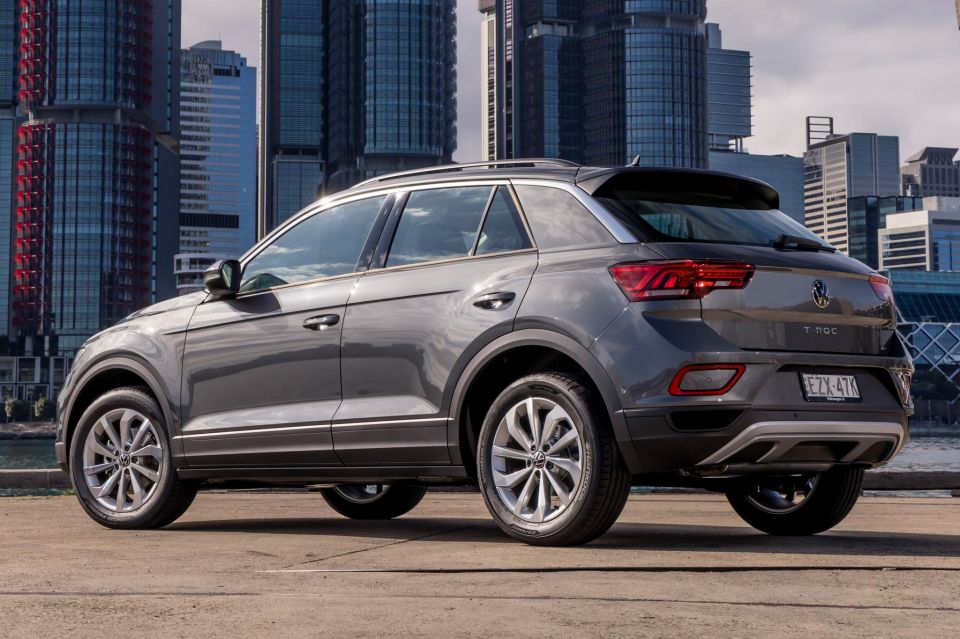

Quickly see how this car stacks up against its competition. Select any benchmark to see more details.
Where expert car reviews meet expert car buying – CarExpert gives you trusted advice, personalised service and real savings on your next new car.
The Volkswagen T-Roc CityLife is a new special-edition entrant to the growing T-Roc SUV line-up.

Slotting in beneath the existing T-Roc Style, the CityLife has smaller wheels and slightly different trims. It also comes at a more affordable asking price, though it misses out on safety equipment that was recently reintroduced to the rest of the range,
Local examples of the T-Roc CityLife started arriving at local Volkswagen dealers on September 1 and the variant will continue to be offered into 2024.
Volkswagen Australia has indicated around 1500 examples of the CityLife will be coming to Australia, with the company looking to expand on this number. A Volkswagen Australia spokesperson said “supply won’t be a problem”.
Does the Volkswagen T-Roc make the most sense as an entry-level model? Read along to find out.
The Volkswagen T-Roc CityLife starts at $35,990 before on-roads. This list price undercuts the T-Roc Style by almost $3000.
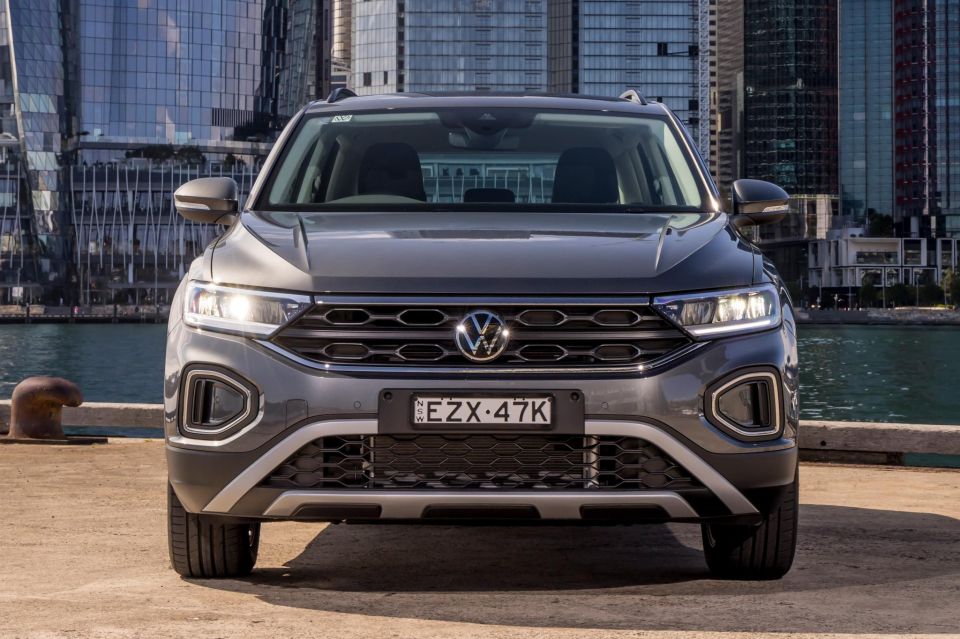
Volkswagen Australia recently detailed a range of nationwide drive-away prices for the entire T-Roc range that will run until the end of the year. The T-Roc CityLife is currently priced at $36,990 drive-away.
The 2024 Volkswagen T-Roc range is priced as follows:
All pricing is before on-road costs, unless specified otherwise.
In terms of similarly priced rivals, you’re really spoilt for choice in the small SUV segment. Some notable rivals include the following:
All pricing is before on-road costs, unless specified otherwise.
Buy your new car without the stress. It's fast, simple and completely free.

Great service from Travis and team, second time I have used this business would not hesitate to recommend them to anyone
Craig C.
Purchased a Ford Ranger in Sunshine Coast, QLD
CarExpert helped Craig save thousands on his Ford Ranger, now let us save you on your next new car.
Find a dealHopping into the Volkswagen T-Roc is easy thanks to its slightly lifted crossover ride height. The seat was exactly level with my hip height so I didn’t have to climb up or down.

Given the T-Roc CityLife is a new entry-level variant it’s not really surprising the seats are fabric. They have an inoffensive design with many different shades of grey and black.
The driver’s seat is manually adjustable, which is understandable, though adjusting the backrest with the dial can be fiddly because it’s tucked beside the B-pillar. There’s also manual lumbar support, which is a bonus if you’ve a bad back.
The seat itself is really squishy and comfortable. There’s enough side bolstering to make you feel like you’re tucked into it.
The seating position is higher than you’d first think, but it’s not too high. I can see why this raised seating position is so sought after because it allows for great visibility.

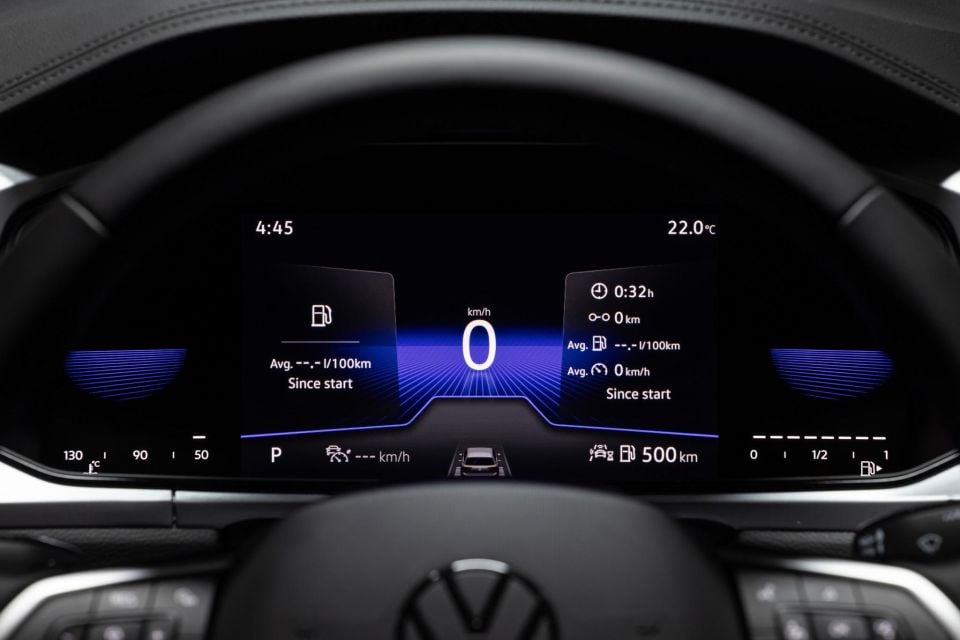
Ahead of the driver is deliciously soft leather-wrapped steering wheel which feels absolutely fantastic in hand. Even better are the physical steering wheel buttons that are a million times better than the capacitive-touch buttons on higher trims.
Behind the steering wheel is the Digital Cockpit (digital instrument cluster) which measures 8.0-inches in diameter. It’s a little bit smaller than the Digital Cockpit Pro that’s now available across the rest of the range and doesn’t display as much content.
Despite this, the 8.0-inch Digital Cockpit still has a number of configurations you can cycle through to your heart’s content. One thing to note is you can’t have dials for both the revs and speed up at the same time.
Regardless of which digital instrument cluster screen view you pick, there’s a large and clear graphic of the digital speed in the centre of the screen.
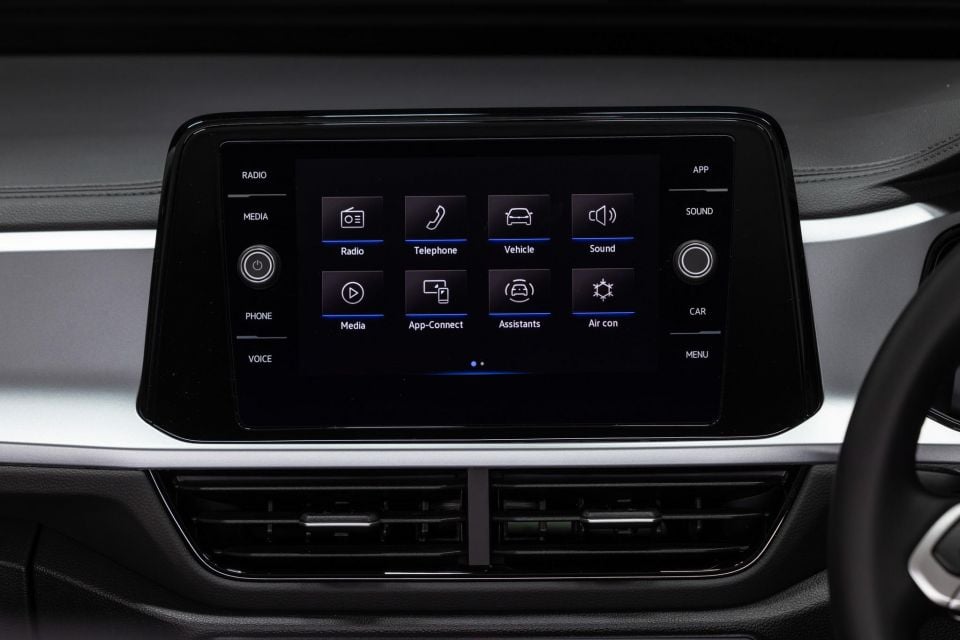
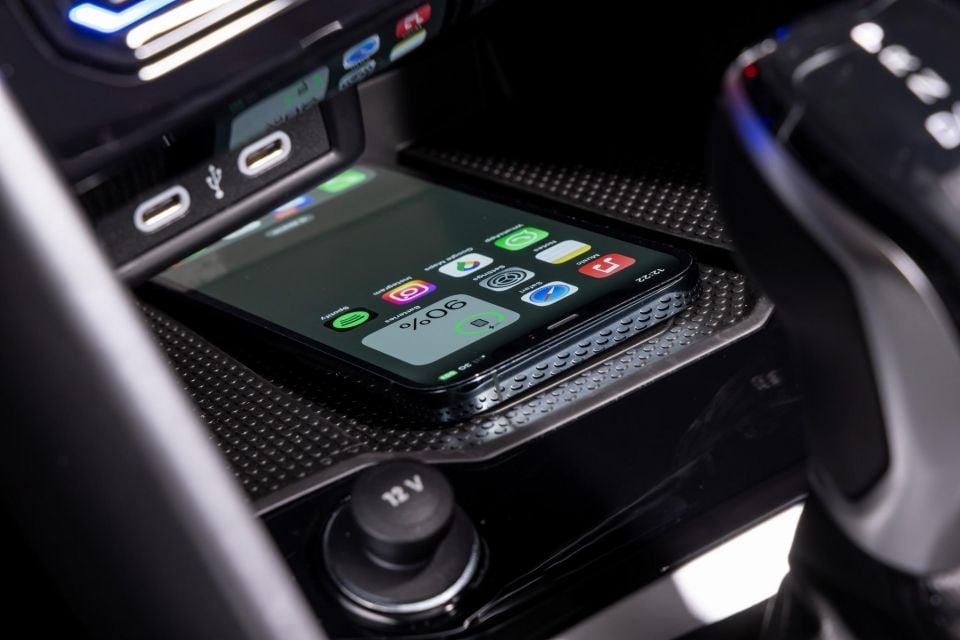
The 8.0-inch touchscreen infotainment system looks a little bit small in its housing. You need to step all the way up to the flagship R variant in order to get a larger 9.2-inch unit.
But the infotainment system makes up its size with how it looks and works. The screen is extremely high-resolution and super responsive to touch. It’s also got gesture controls which take a little bit to learn, but become second nature once you’re used to them.
The T-Roc CityLife’s infotainment system only comes with wired Apple CarPlay and Android Auto, which is disappointing given the rest of the range has wireless forms of both. You’ll need to plug into one of the front USB-C ports in order to use smartphone mirroring.
Despite this, one common gripe of wireless smartphone mirroring is it decimates your phone battery. I typically plug my phone in on longer trips anyway to negate this, so losing wireless functionality isn’t a dealbreaker.

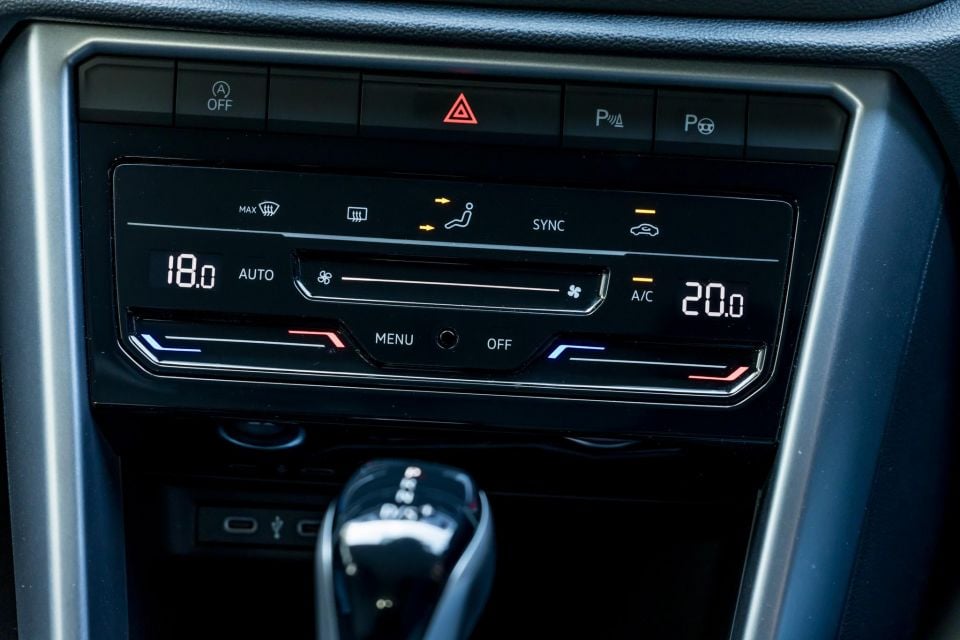
There’s a wireless phone charger, which serves less of a point given there’s no wireless smartphone mirroring. It’s handy though if a passenger needs to charge up their phone doesn’t have a charging cable handy.
The T-Roc CityLife’s 8.0-inch touchscreen infotainment system doesn’t come with built-in satellite navigation, which isn’t the end of the world given I use Google Maps with Apple CarPlay almost 100 per cent of the time.
Under the touchscreen are a set of touch-capacitive for the climate controls which aren’t anywhere near as nice to use as physical knobs and buttons. The shiny black panel also gets a little grimy from fingers poking and prodding at it.
Looking around the cabin there are a number of soft-touch fabrics and plastics, which is great to see on an entry-level vehicle. You don’t need to look far, however, to find the inevitable harder plastics.

I appreciate the limited use of piano black on the dashboard and around the centre tunnel. The silver dash highlights look considerably classier and don’t get anywhere near as scratched and dirty in the long-term.
On the centre tunnel there’s a tall gear selector, as well as two-and-a-half cupholders. The centre console is a little on the small side but the lid ratchets, which is one of my favourite Volkswagen features.
The only thing that’s missing is an auto-hold function, which is tied to the fact this T-Roc variant has an eight-speed torque-converter automatic instead of a dual-clutch automatic.
The T-Roc CityLife’s six-speaker sound system packs a surprising amount of punch given it lacks an amplifier and subwoofer.
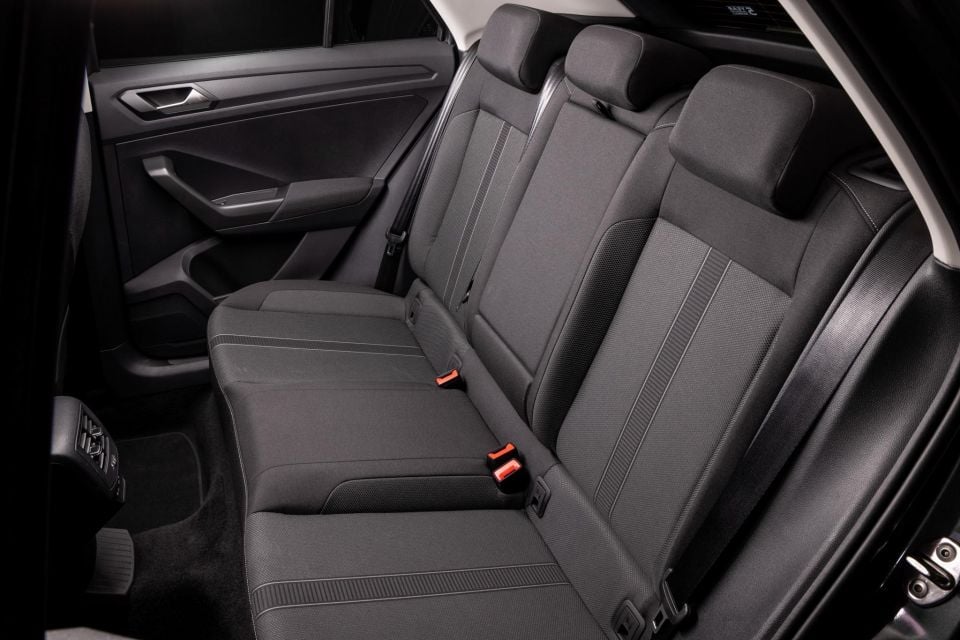
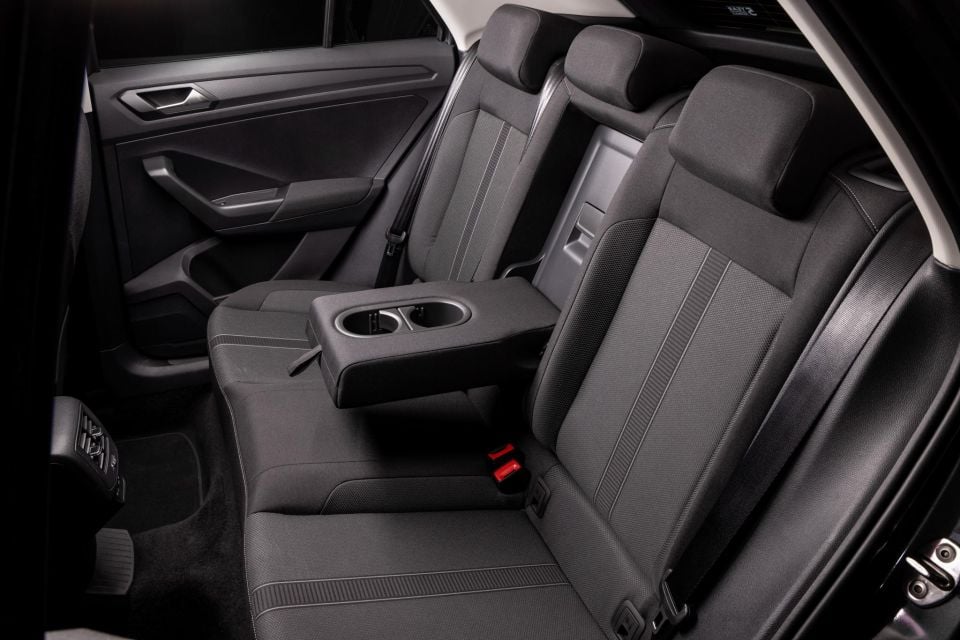
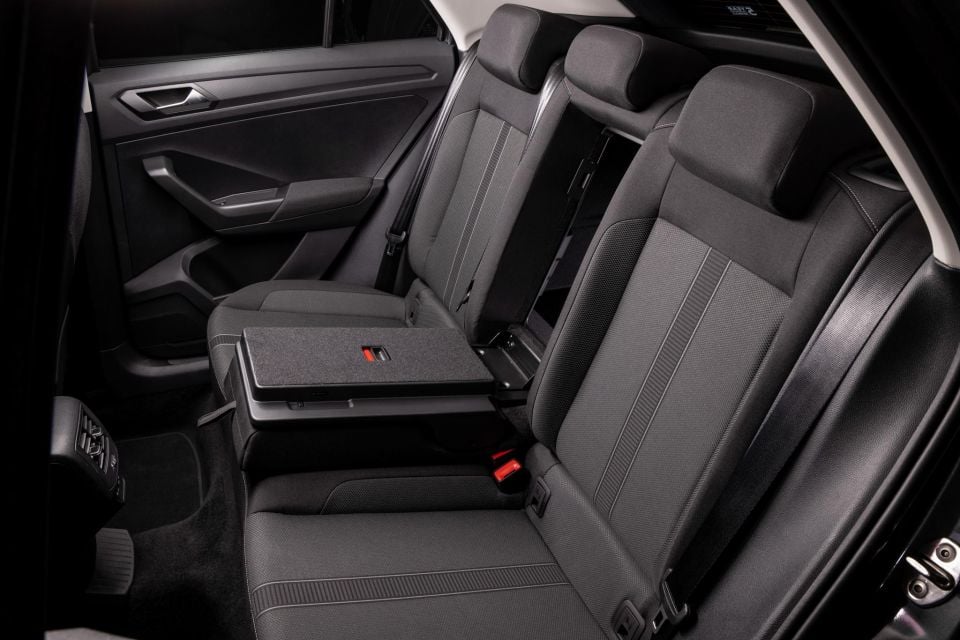
Moving to the second row there isn’t an overtly noticeable step-down in terms of quality, though it is a little bit tighter than the first row.
The seat itself is still very comfortable and the headrests are even squishier than the ones on the front seats.
At a leggy 182cm I had to splay my legs around the driver’s seat in order to sit comfortably and not have my knees dig into the backrest. There’s also a high centre tunnel which limits the amount of foot room.
In terms of second-row amenities, there are centre console-mounted air vents, two USB-C ports, as well as a fold-down armrest with cupholders. There’s even a pass through into the boot which is handy if you need to load longer items or want to quicker grab something from the boot without stopping.

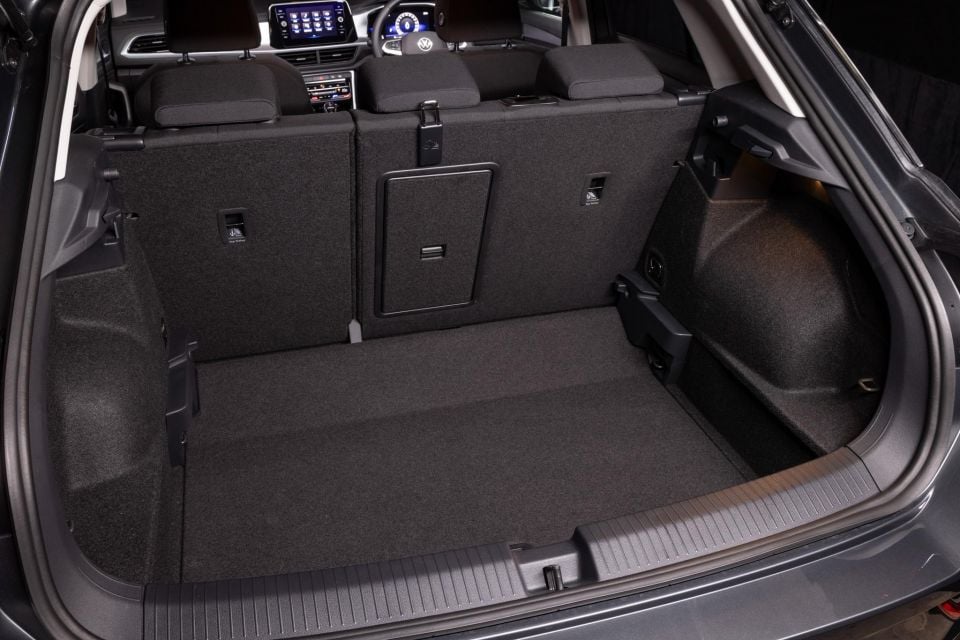
Around the back the T-Roc CityLife has a manually operated tailgate, which is to be expected given it’s the entry-level variant. There’s a dual-tier boot floor, which in its lowest setting allows for a cavernous 445 litres of boot capacity.
The second row of seats also fold in a 60:40 configuration which expands the boot capacity all the way to 1532 litres of space. There aren’t many features in the boot besides a light, some bag hooks, as well as some tie-down points.
Under the boot floor there’s a space-saver spare tyre which isn’t quite as good as a full-size spare tyre but a million times better than having nothing at all or a tyre inflation kit.
There appears to be enough space under the boot floor to have a proper full-size spare wheel, so I’m a little confused why Volkswagen didn’t go down the path of opting for one.
The Volkswagen T-Roc CityLife is powered by a 1.4-litre turbocharged four-cylinder engine producing 110kW of power and 250Nm of torque.
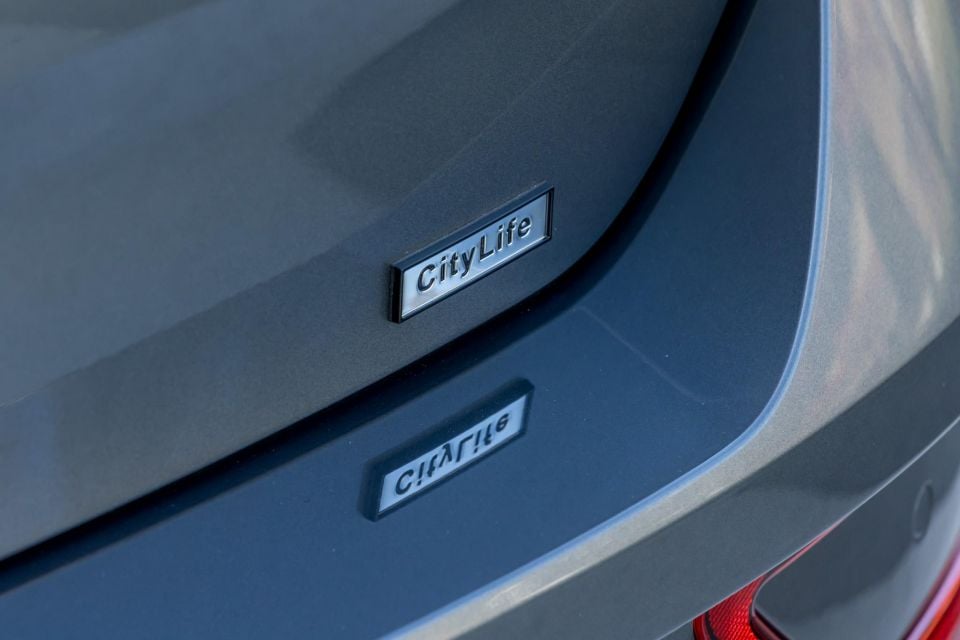
This is mated to an eight-speed torque-converter automatic transmission with drive sent to the front wheels only. Volkswagen claims the T-Roc CityLife can do the 0-100km/h sprint in 8.7 seconds.
The T-Roc CityLife’s 110TSI engine is the least-powerful engine in lineup. The T-Roc R-Line gets you a 2.0-litre turbo four-cylinder with 140kW/320Nm, and the T-Roc R gets an uprated 2.0-litre turbo four-cylinder with 221kW/400Nm.
Claimed combined fuel consumption is 6.3 litres per 100km. After around 200km of mixed city, metropolitan, highway and spirited B-road driving, we were able to beat the claim with an average of 6.0 litres per 100km.
As standard there’s an engine idle stop-start system, as well as brake energy recuperation. It has a 50-litre fuel tank and requires a minimum of 95 RON premium unleaded petrol.
Starting up the T-Roc CityLife is easy thanks to the logically placed starter button next to the gear selector.
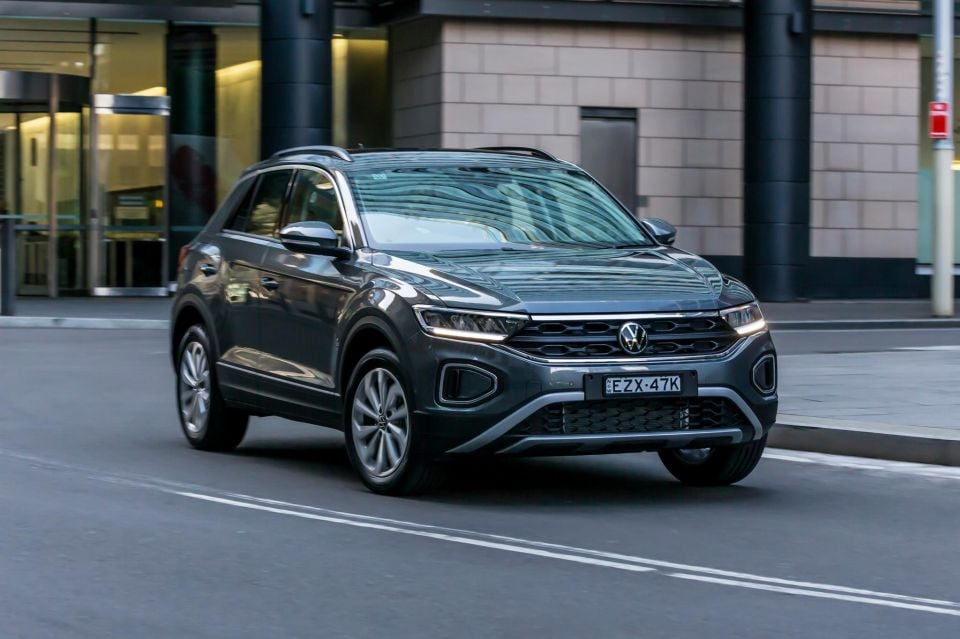
At idle the 1.4-litre turbocharged four-cylinder petrol engine sounds really familiar and refined. This engine has now been production for over 10 years and has been in quite a number of Volkswagen Group vehicles.
Outputs of 110kW and 250Nm don’t sound crazy on paper, but in reality they’re completely adequate.
From the lights the T-Roc CityLife keeps up with traffic no problems whatsoever. Push it and you’ll easily pull ahead of traffic, though there is sometimes a bit of lag before you get moving. The torquey four-cylinder turbo shouldn’t be underestimated.
What does let this fantastic engine down a little bit though is the eight-speed automatic. It’s not quite as slick as a traditional Volkswagen dual-clutch transmission.
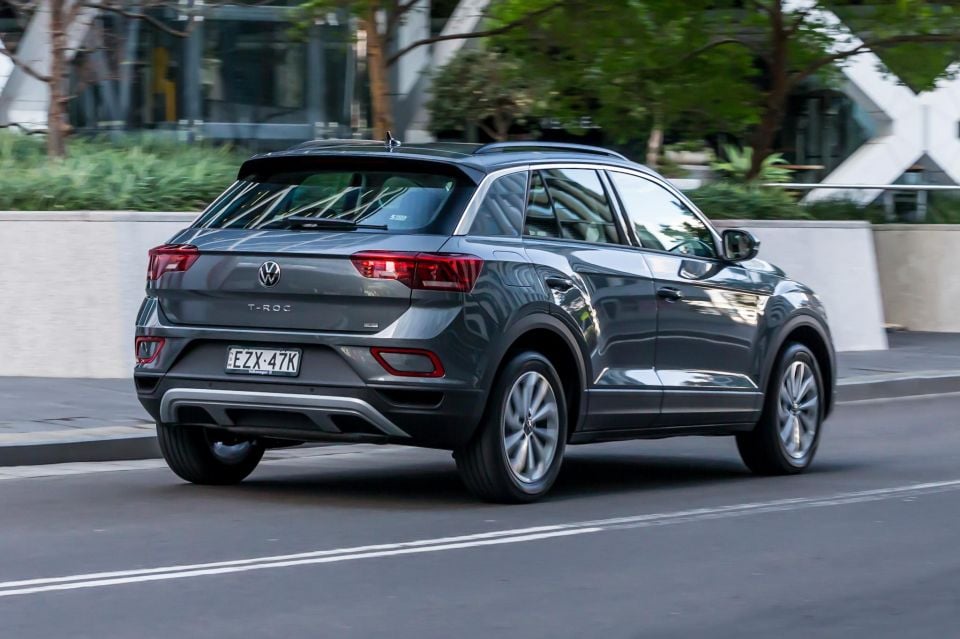
For the first couple of gears the transmission likes to make the engine rev right out, which feels a little awkward given peak torque comes on tap from 1500rpm. It’s somewhat like the transmission is constantly in sport mode.
Around the city the T-Roc is very easy to drive. It has light steering which makes twirling the wheel for sharp turns and also manoeuvring in multi-level car parks an absolute breeze.
This also means parking the T-Roc CityLife is super easy. The car comes with front and rear parking sensors, as well as a reversing camera. The latter’s camera quality, however, isn’t anything to phone home about.
The CityLife is now the only T-Roc variant to go without rear cross-traffic alert. This safety feature can alert the driver if a vehicle is driving along adjacent to where you’re reversing out of and brake if necessary.
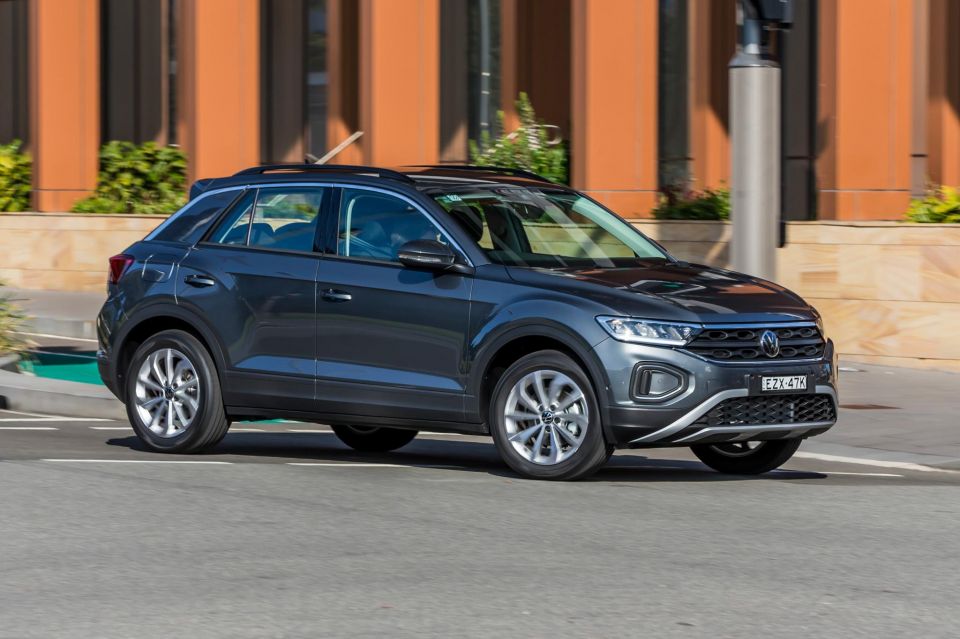
Where expert car reviews meet expert car buying – CarExpert gives you trusted advice, personalised service and real savings on your next new car.
At city speeds the T-Roc CityLife’s suspension is really compliant. It takes everything all in its stride and never feels uncomfortable.
Building up speed can make the eight-speed automatic transmission jump between gears, feeling slightly indecisive, which is strange because the engine has enough torque to maintain the selected gear… but transmission still chooses to shuffle between ratios anyway.
There’s still enough power, although you can start to feel the upper limits of the 1.4-litre turbo four-cylinder if you want to accelerate quickly up to highway speeds. If you want more power you’re spoilt for choice in the T-Roc range; there’s even the hot T-Roc R which can do the 0-100km/h sprint in 4.9 seconds.
The T-Roc CityLife is arguably the pick of the range for ride comfort, as it can handle pimply metropolitan roads like nothing. This is likely due in part to the smaller 17-inch alloy wheels that have tyres with plenty of sidewall.
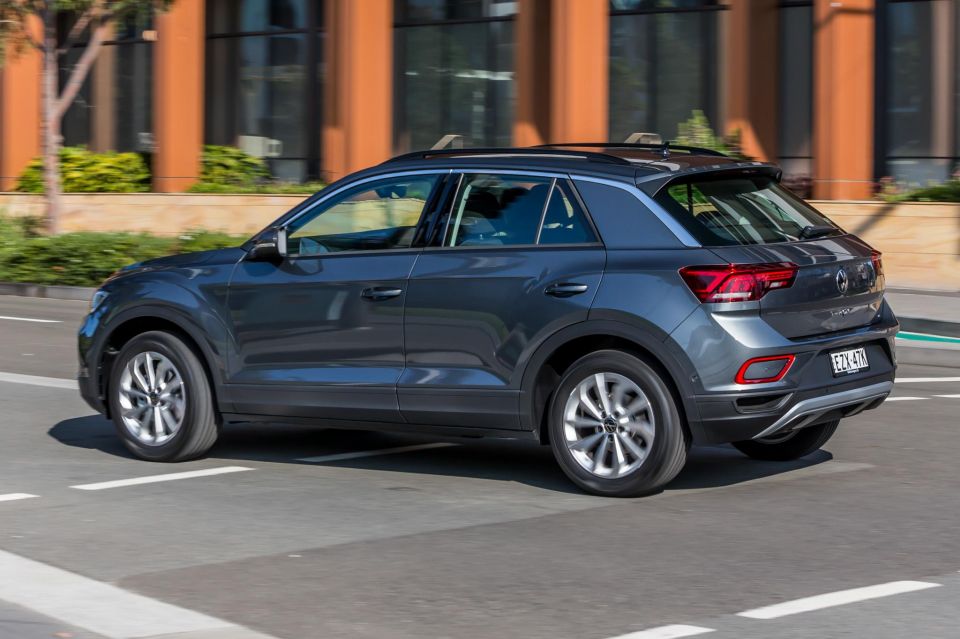
Unlike more expensive T-Roc variants which have rear independent multi-link suspension, the CityLife has a rear torsion-beam semi-independent suspension setup. If you didn’t know this though you’d be hard pressed to tell the difference.
When you push the T-Roc CityLife on some twisty roads, its Golf GTI-like nature becomes apparent. It doesn’t have the power to match the Golf GTI, but for a small SUV it’s quite a fun thing. There are subtle hints of body roll, but that’s to be expected given its jacked-up ride height.
Dialling up to highway speeds and the T-Roc CityLife finds its groove and sticks to it. The car is such an effortless cruiser, though the transmission can shuffle through the gears a bit if there’s a hill.
Even on coarse-chip bitumen roads there isn’t much road noise that’s sent into the cabin. This is likely due in part again to the T-Roc CityLife’s chubby tyres, as well as the sound insulation.
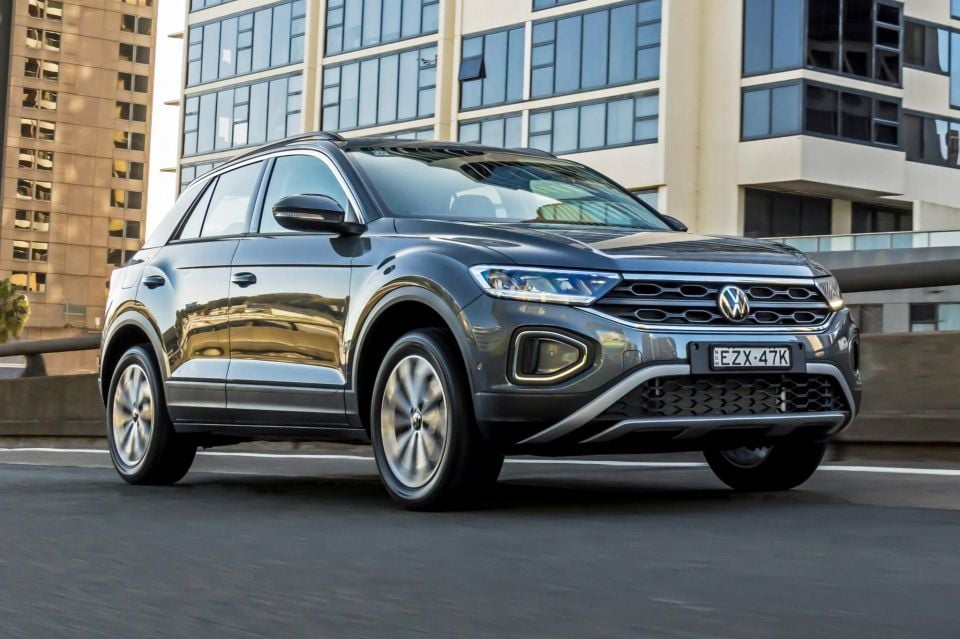
On the safety front, the T-Roc CityLife’s adaptive cruise control is one of the best. The way it interacts with other cars is extremely natural. You never have any awkward moments where the car slams on the brakes.
The Travel Assist system is also fantastic at what it does, making highway cruising even easier. The system is able to operate on twisty roads for the most part, though it disengages when it can no longer detect road marking sufficiently.
In addition to the T-Roc CityLife missing out on rear cross-traffic, it doesn’t have any form of blind-spot monitoring. This safety feature can help detect when a vehicle is in your blind-spot when travelling along a multi-lane road.
The last thing I’ll mention in this section is the T-Roc CityLife ditches the projector LED headlights that the rest of the range have in place for a set of reflector LED headlights. Although this isn’t world-ending, reflector LED headlights typically aren’t as bright as projector LED headlights.
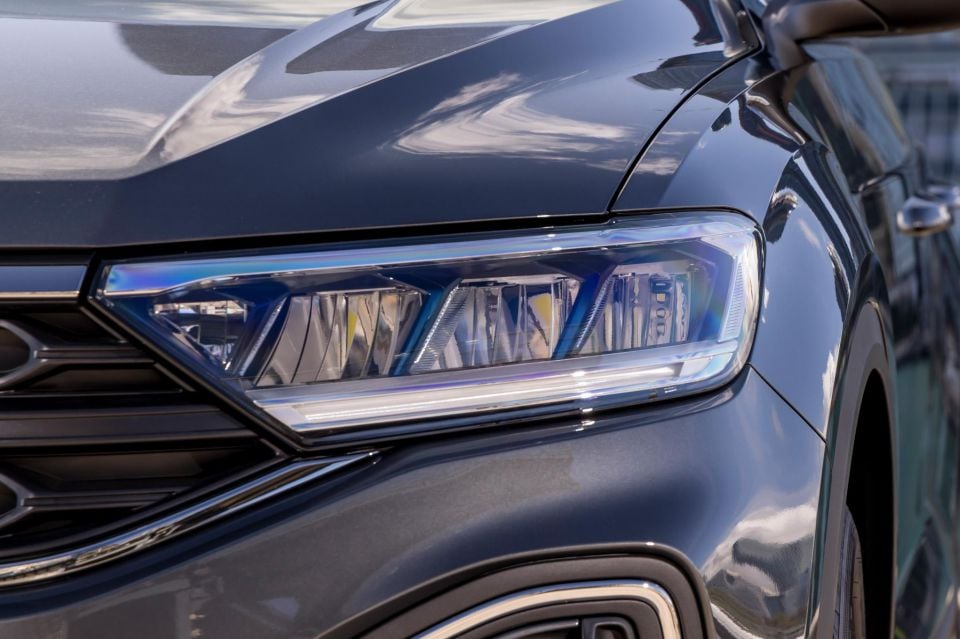
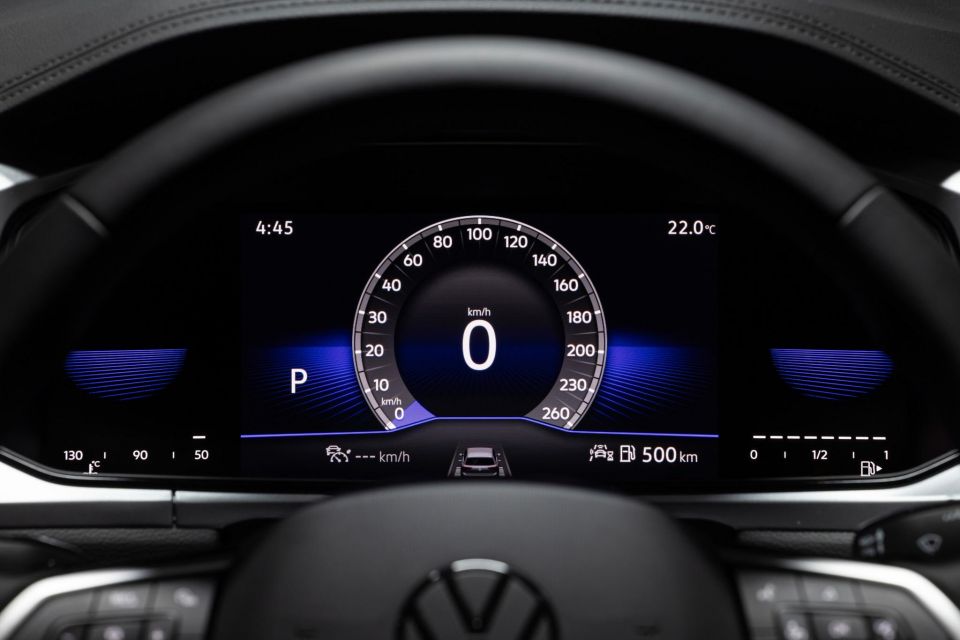
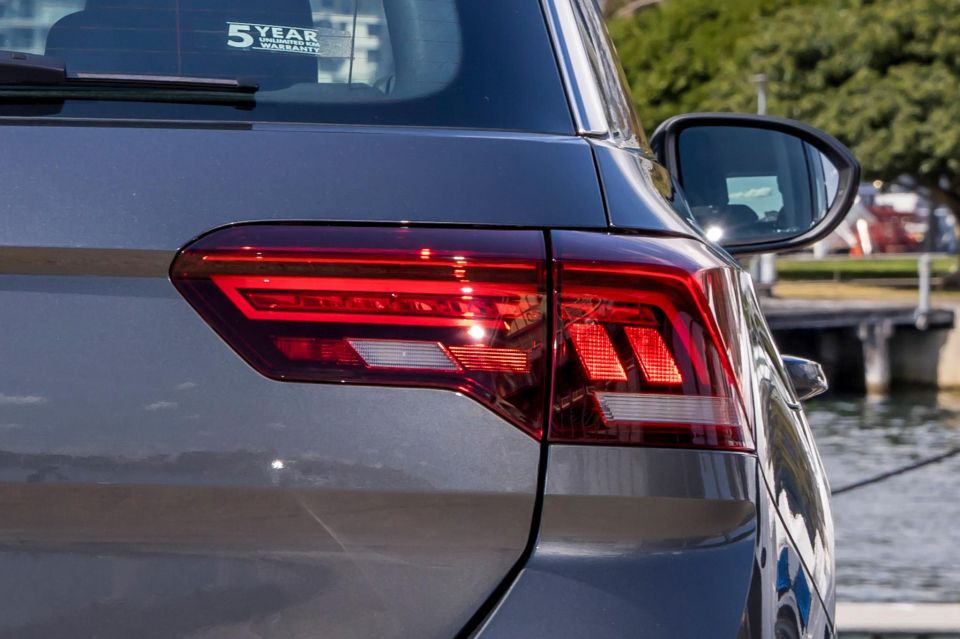
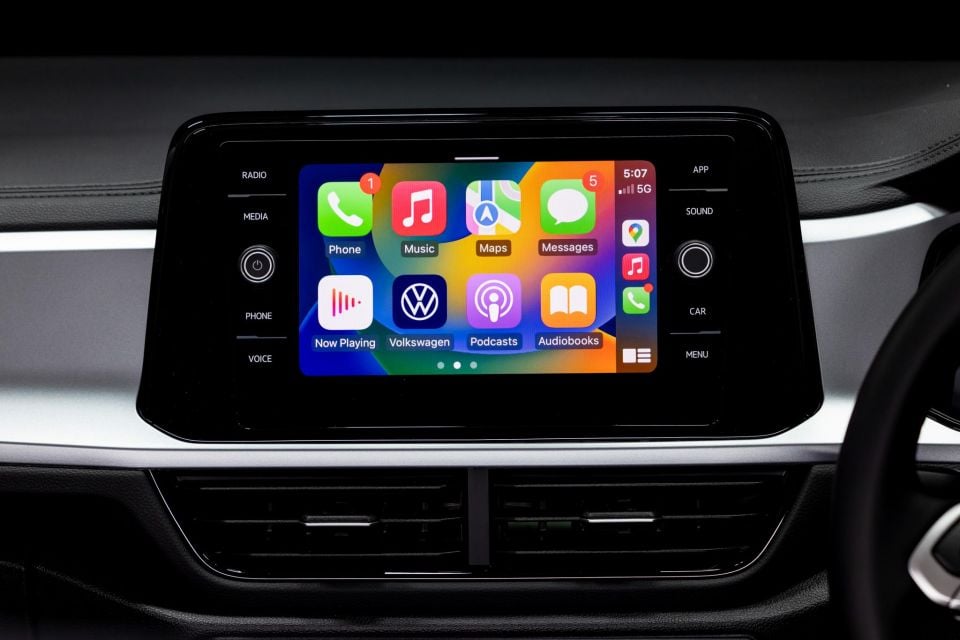
Volkswagen T-Roc CityLife highlights
Exterior
Interior
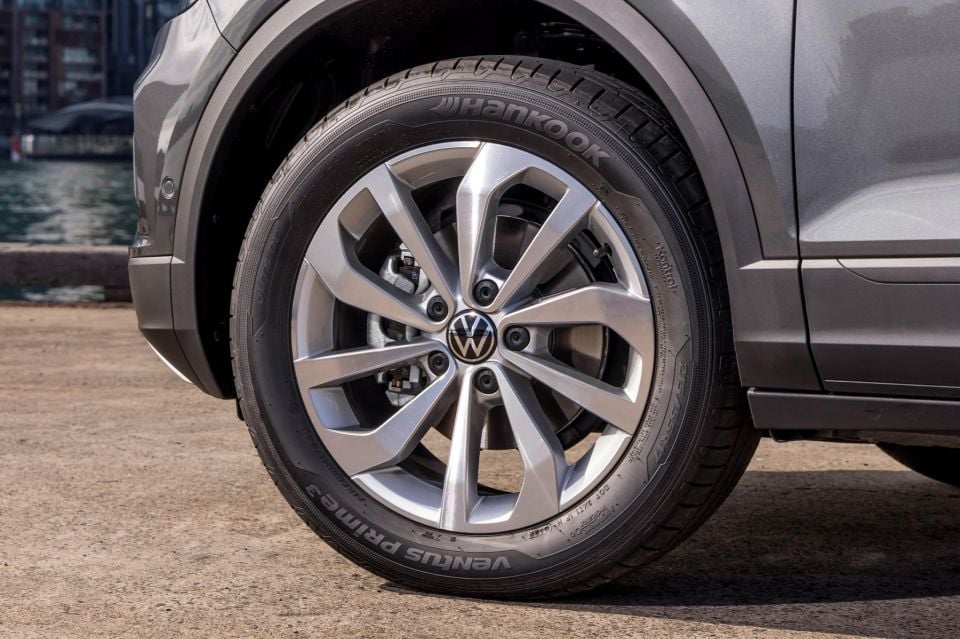

The Style adds:
The R-Line adds:
The R adds:
The Volkswagen T-Roc has a five-star ANCAP safety rating, based on testing conducted in 2017 by Euro NCAP.
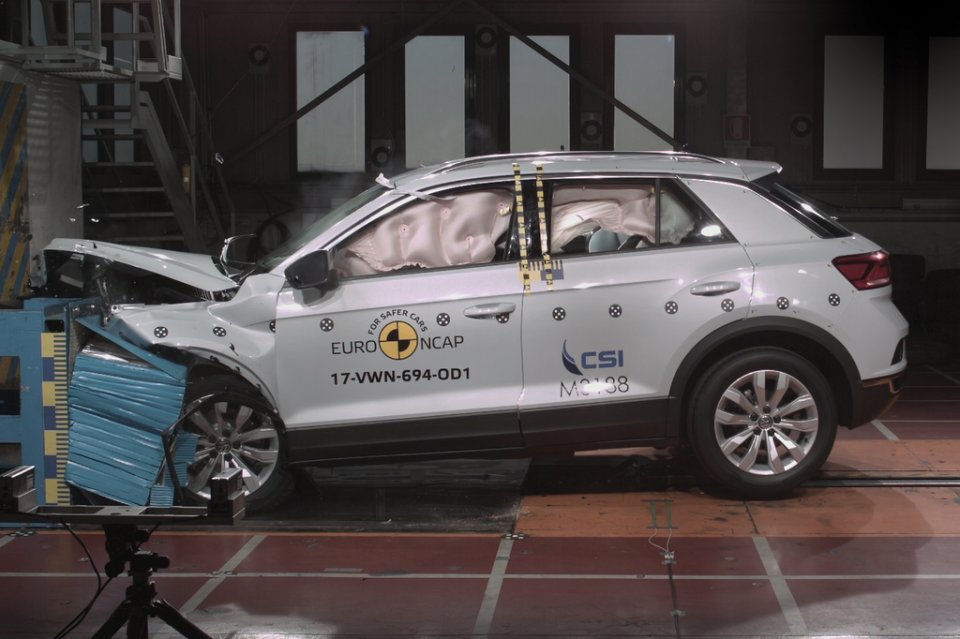
It received an adult occupant protection score of 96 per cent, a child occupant protection score of 87 per cent, a pedestrian protection score of 79 per cent, and a safety assist score of 71 per cent.
Standard safety features include:
Stepping up to the T-Roc Style gets you blind-spot monitoring and rear cross-traffic alert.
The whole T-Roc range comes standard with three top-tether points and two ISOFIX points on the outer rear seats.
The Volkswagen T-Roc CityLife is covered by a five-year, unlimited-kilometre warranty.
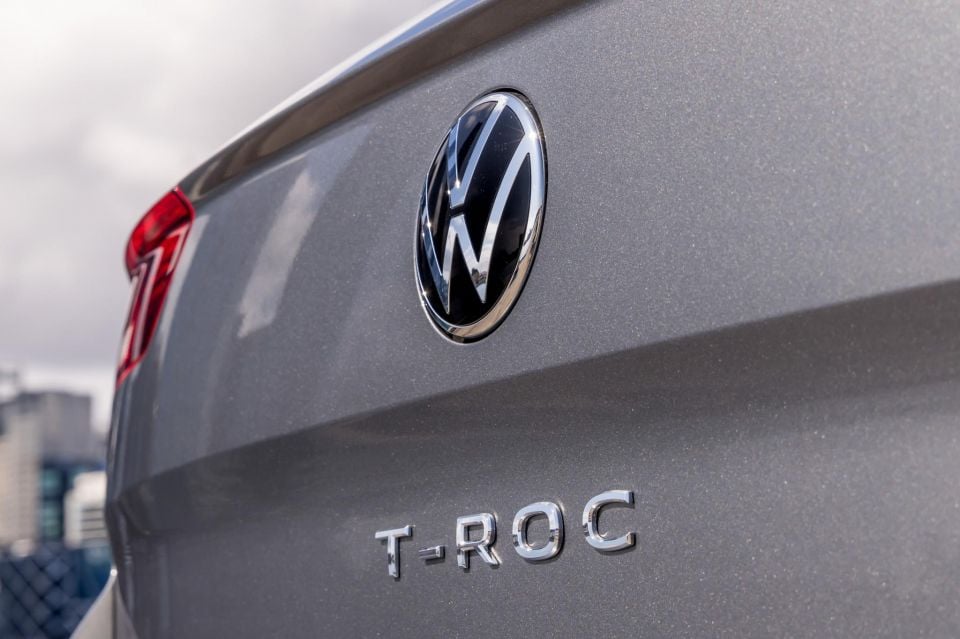
Servicing is required every 12 months or 15,000km, and Volkswagen offers three- and five-year Care Plans, which is its term for prepaid service packages.
The three-year prepaid service package on the T-Roc 110TSI is $1450, whereas the five-year Care Plan costs $2450.
The Volkswagen T-Roc CityLife brings the fight to the range of small SUV buyers who want to step up into something a little bit more premium-feeling.

At an enticing $36,990 drive-away, the T-Roc CityLife undercuts the rest of the lineup by a considerable margin and still packs a high-tech interior and dynamic driving experience. It’s also the most compliant variant on the road due to its smaller 17-inch alloy wheels.
It isn’t perfect, however, as you miss blind-spot monitoring and rear cross-traffic alert, which are both potentially crash-saving additions. It’s disappointing these features aren’t standard across the T-Roc lineup now, given component shortages are easing.
It’s the only point on which we can’t wholeheartedly recommend the CityLife, given safety is a key consideration for most. If you can look past the missing features though, there’s plenty on offer here.
If you want the full suite of safety assists you’ll need to step up to the T-Roc Style, which is currently priced from $41,990 drive-away.
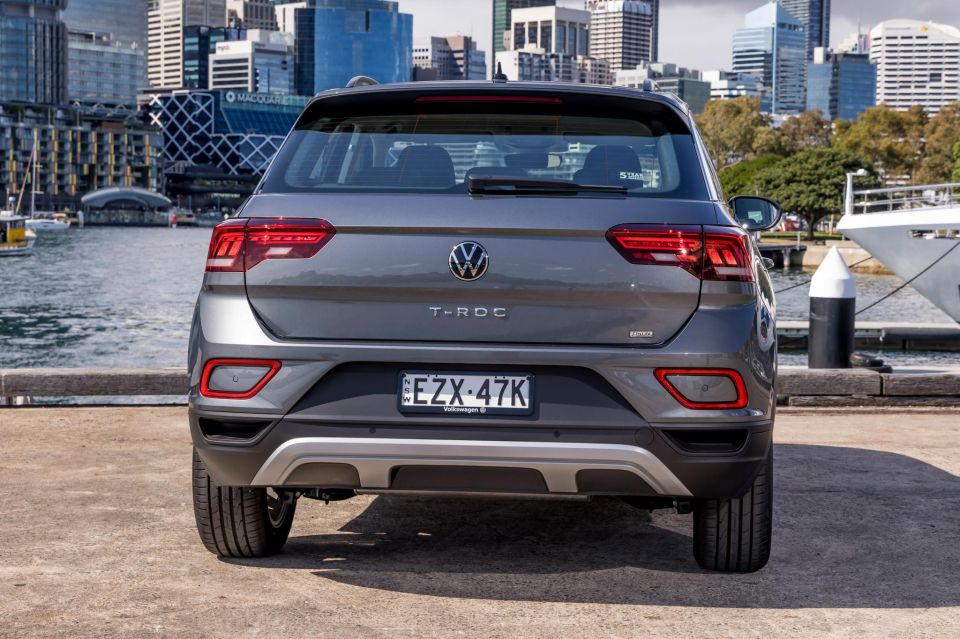
Click an image to view the full gallery.
MORE: Everything Volkswagen T-Roc BUY: Volkswagen T-Roc
Where expert car reviews meet expert car buying – CarExpert gives you trusted advice, personalised service and real savings on your next new car.
Jack Quick is an automotive journalist based in Melbourne. Jack studied journalism and photography at Deakin University in Burwood, and previously represented the university in dance nationally. In his spare time, he loves to pump Charli XCX and play a bit of Grand Theft Auto. He’s also the proud owner of a blue, manual 2020 Suzuki Jimny.


Damion Smy
1 Day Ago


CarExpert.com.au
6 Days Ago


Damion Smy
6 Days Ago


Damion Smy
6 Days Ago


Josh Nevett
7 Days Ago


Max Davies
7 Days Ago